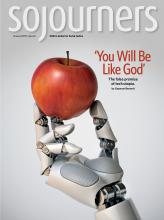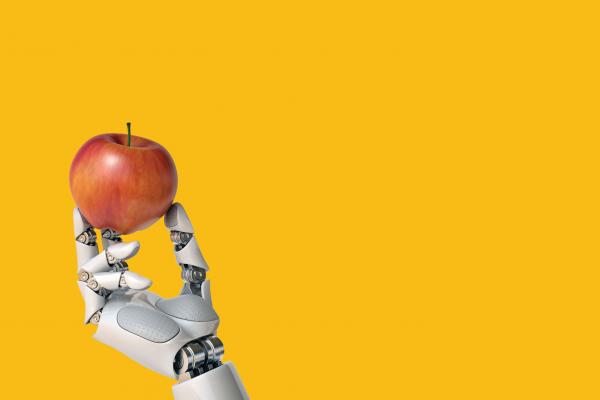ON JAN 9, 2007, STEVE JOBS stepped onto a stage in San Francisco, his trademark black mock-turtleneck blending with the shadowed backdrop, his clipped hair and lean countenance offering a monk-like silhouette against the screen.
Jobs stepped forward and raised his arms. And there it was, almost inconspicuous in the palm of his hand. “Today, Apple is going to reinvent the phone ... here it is ... the iPhone.” Naming a new god.
At the time, no one consciously believed that smartphones, the internet of things, or ubiquitous computing would save us. Yet, as the encyclical Laudato Si points out about technocracies: No one has to actually believe they’re gods. They become gods when we start investing our hope and identity in them.
And here we are. We live as if the connections provided by digital technologies are vital—and indeed we have made them so.
A decade after the first iPhone, environmental engineer Braden Allenby was asked whether, one day, humans would be wired directly into the internet. “Look at any city street,” he replied. “At least half the people are looking at their phones. We’re already integrated into networks beyond our physical environment.” Heads bowed, praying to strange new gods.
It began as allure: more accessible music, easier communication, maps and directions. Then it slid toward addiction: picking up the phone in the morning, like a first cigarette of the day. And now, dependence: Our lives are synced, our habits surveilled, our data monetized, and the world goes ’round. Our little intimacies power a vast machinery.
All in the name of improving our lives.
Read the Full Article

